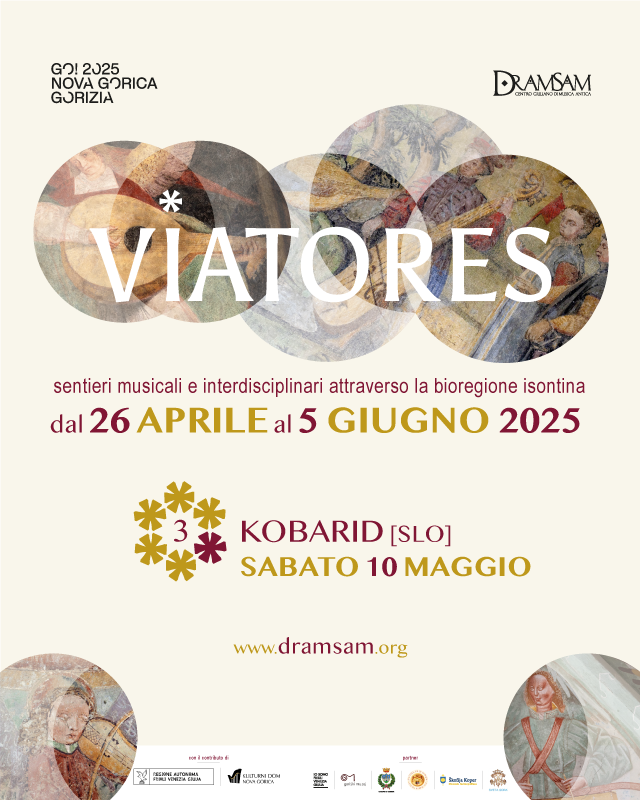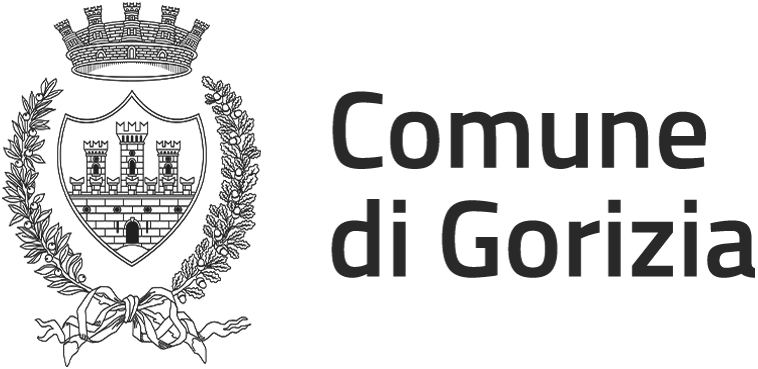When:
from 11:00 To 18:00
VIATORES - Musical and interdisciplinary paths through the Isonzo bioregion / Kobarid

VIATORES is a six-stage journey through the areas marked by the Soča river. Each stage offers a nature or historical excursion accompanied by a guide and a concert with ancient instruments in one of the many ancient churches in the Isonzo area.
11 a.m. SVINO (KOBARID) Church of St Andrew in Svino In 1477, the community of Svino inaugurated a new church dedicated to St Andrew, the apostle.
The church is a medieval building of uniform construction, with a typical Gothic vaulted presbytery known as ‘Carniolan’ (the work of Master Andrej of Loka).
The presbytery and triumphal arch feature frescoes from 1529, a successful combination of Slovenian-Carniolan architecture and Friulian painting. The ‘golden altar’ from 1669 was probably made by Jernej Vrtav from Kobarid.
The church was used as a hospital during the First World War. Bilingual (ita/slo) prologue by Andrea Bojc, an art historian, on the history of the church and the 15th-century frescoes it contains.
To follow: Concert by the Dramsam Ensemble: Non fu mai più bel sollazzo II music and popular devotion between the Middle Ages and the Renaissance.
Beginning in the 9th century, forms of popular devotion began to emerge that would find massive diffusion with the Franciscan movement of the 13th century and with the birth of the confraternities, groups of faithful that adopted forms of prayer and devotion often far removed from the officiality of ecclesiastical rites.
The salient feature of these extraliturgical forms of prayer is the use of everyday language for texts accompanied by music, a form known as ‘lauda’ that continued to be practised until the 18th century and that often relied on popular musical repertoires, including dance music.
The programme Non fu mai più bel sollazzo presents in four episodes the different forms of lauda practised from the late Middle Ages to the late Renaissance.
The concert is accompanied by detailed information on the sources, the musical instruments used (all faithful copies of the instruments in use at the time), and the functions and characteristics of the laudatory repertoire.
Ensemble Dramsam Alessandra Cossi: Voice, synphony, percussion Marco Ferrari: Flutes, bagpipes Fabio Tricomi: Vielle, flutes, percussion Fabio Accurso: Lutes, direction 3.30 p.m. Archaeological Park Divje Babe (Šebrelje) A bilingual (Italian/Slo) guided tour of the Divje Babe Archaeological Park, one of the most important Palaeolithic sites in the world, stretching from the Šebrelje plateau to the Idrijca (Idria) river valley.
Along a steep, rocky slope lies a cave, the site of artefacts left behind by a Neanderthal settlement, including a 60,000-year-old flute.
Made from a bear bone, this flute is the oldest musical instrument in the world.
Challenging hike lasting about 2 hours. Hiking clothing and footwear are recommended.
Places are limited and booking is compulsory. Cost of the visit: €12. Possibility of organised transport. For reservations and information: info@dramsam.org
+39 338 188 2364 Discover all the events of the festival: www.dramsam.org/viatores
Language info
Event language: IT, SLAccessibility
Not applicable***GO! 2025 has its own policy for event publication, available at this link. Not all information provided may be current and/or accurate and GO! 2025 does not accept any responsibility in this regard. It's recommended to contact the event organizer directly to verify the information of interest.


